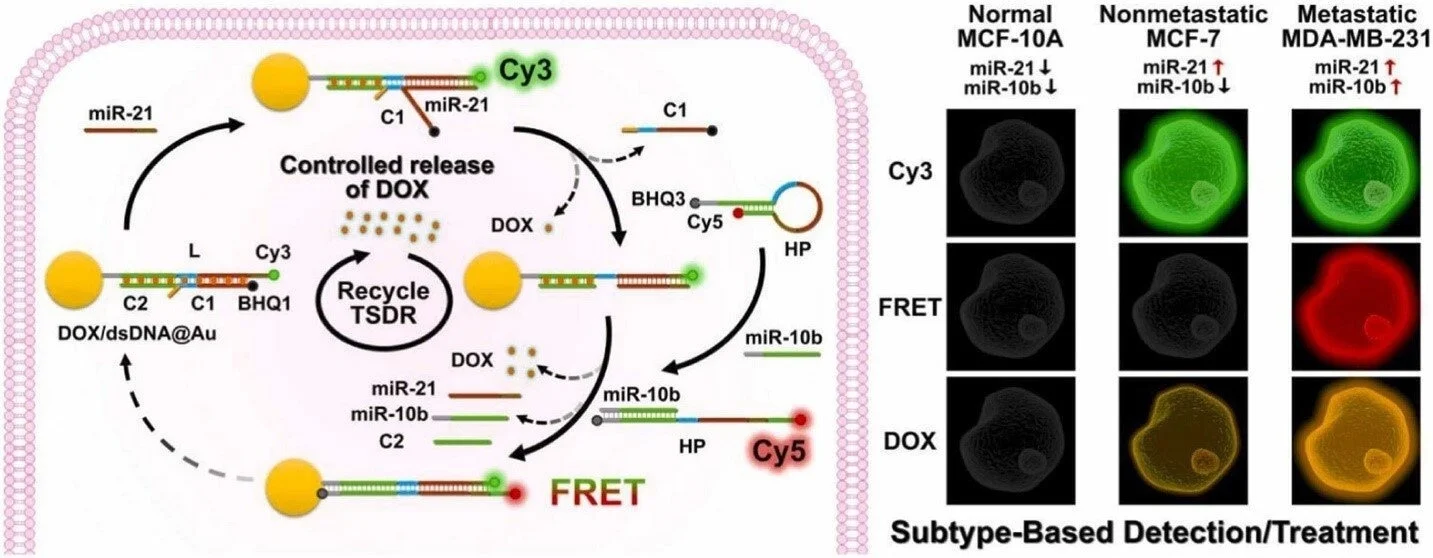The most prevalent disease in women, breast cancer, poses a major risk to the health of women. Patients’ clinical treatment and prognosis might differ significantly because of the high levels of intra- and intertumoral heterogeneity in breast cancer.

Chemotherapy is now the primary systemic treatment for triple-negative breast cancer (TNBC), a prevalent type of breast cancer that lacks any of the typical breast cancer receptors. However, treatment with a homogeneous high-dose chemotherapy regimen without genetic subtyping usually results in inadequate effectiveness, adding additional stress to patients.
In a study published in Biomedical Analysis, a group of Chinese researchers describe a novel discriminating and treatment strategy—a dual-miRNA-triggered DNA-programmed nanomachine capable of imaging endogenous miRNA expressions. This method enables subtype-based identification, hence controlling the release of drugs during chemotherapy.
For the diagnosis and subtyping of breast cancer, histological examination of puncture biopsy sample is the ‘gold standard,’ but it is invasive and difficult to realize dynamic monitoring of tumor progression and prognosis for treatment guidance.”
Yun Xiang, Study Corresponding Author and Professor, Southwest University
Xiang added, “Fluorescence imaging techniques are capable of visualizing and monitoring minimal molecular changes occurring at an early stage of cancers with high resolution and sensitivity. However, single miRNA imaging is not suitable for discrimination of cancer cell types.”
Notably, targeted treatments, like high-dose chemotherapy in TNBC and conventional-dose chemotherapy in other breast subtypes, have not been realized despite prior research showing that dual miRNA-triggered drug release can be applied for cancer therapy via the toehold-mediated strand displacement reactions (TSDR).
We developed a DNA-programmed nanomachine for effective discrimination and tailored treatment of specific breast cancer cell types.”
Shunmei Li, Study First Author, Southwest University
“It is a responsive therapy strategy towards the various cell states. This intelligent nanomachine with controlled release of anti-cancer drug in specific cancer cell subtypes can reduce the side effect to normal cells and facilitate the targeted therapy, which is promising as a theranostics nanoplatform in precise medicine,” Li concluded.
Source:
Journal reference:
Li, S., et. al. (2024) Dual-microRNA triggered and DNA-programmed nanomachine for subtype-based detection and tailored treatment of breast cancer cells. Biomedical Analysis. doi:10.1016/j.bioana.2024.01.001
Read More:New method for detecting and treating breast cancer subtypes
2024-04-02 07:28:00
